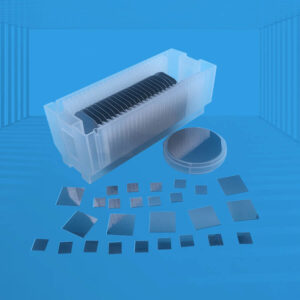Gallium Antimonide (GaSb) Crystals and Substrates
Excellent physical and chemical properties:
GaSb belongs to group III-V compound semiconductors with a sphalerite structure and direct bandgap characteristics, with a bandgap width of 0.725 eV (300 K) and a lattice constant of 0.60959 nm.
GaSb single crystals have a high critical yield stress (15.8 N/mm²) and a low dislocation density (no more than 10³ order of magnitude), which makes them suitable for the fabrication of high-performance optoelectronic devices.
Good lattice matching:
The band gap of GaSb covers a variety of ternary and quaternary III.-V compound solid solutions in a wide spectral range (0.8~4.3μm), and the epitaxial growth of the above solid solution materials using GaSb as a substrate material can effectively reduce the stress and defects caused by lattice mismatch.
High photoelectric conversion efficiency:
Te-doped GaSb can be used to prepare thermophotovoltaic devices, tandem solar cells and microwave devices with high photoelectric conversion efficiency. These devices excel in photoelectric conversion efficiency and stability.
Various preparation methods:
The preparation of GaSb mainly includes the improved Straight Pull Method (CZ), Vertical Gradient Solidification Method (VGF) and Vertical Bridgeman Method (VB) such as Liquid Seal Straight Pull Method (LEC), Hydrogen Reduction Method, etc. Each of these methods has its own advantages and disadvantages, but all of them can meet the growth needs of GaSb crystals to varying degrees.
Customizability:
GaSb crystals and substrates can be customized according to customer needs, including different doping types (undoped, Zn-doped, Te-doped) and size specifications to meet the needs of different application scenarios.
Applications: Infrared Detectors & Lasers, Thermophotovoltaic devices, Solar Cells, Microwave Devices, etc.

1-300x300.jpg)
